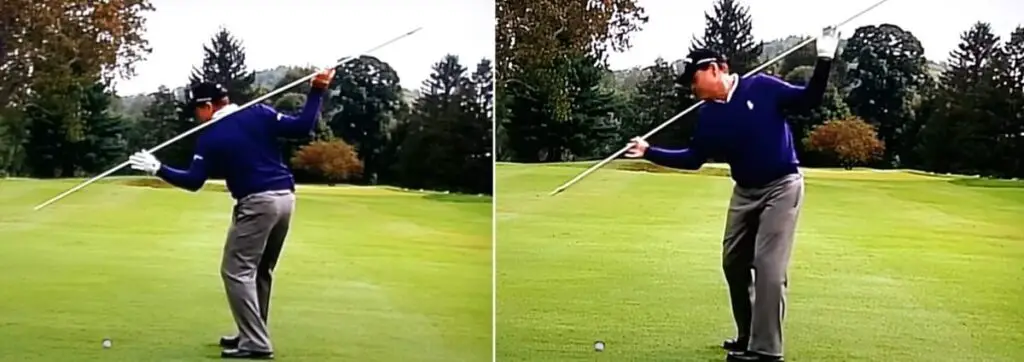For me, focusing on ‘folding my left arm’ after impact is the key to ‘swinging left’ as Watson would say. Ultimately, it all boils down to ‘feeling’ an efficient release that is easy to emulate.
For Watson, that means swinging left (almost over the top left). He has to overcompensate for his natural tendency to swing under the ideal plane and way too far right.
For me, it means ‘swinging through the ball’, folding my left arm (after impact) and finishing with the shaft of the club actually making contact with the back of my left shoulder (ie a lot like Jack Nicklaus and Fred Couples).
Personally, I think you should experiment with the following ideas if you really want to get a feel for Tom Watson’s secret:
- Swing left (and up) after impact
- Maintaining the spine angle you set at address throughout your golf swing
- Try folding your left arm after impact. You might unlock that Fred Couples effortless power if you do.

